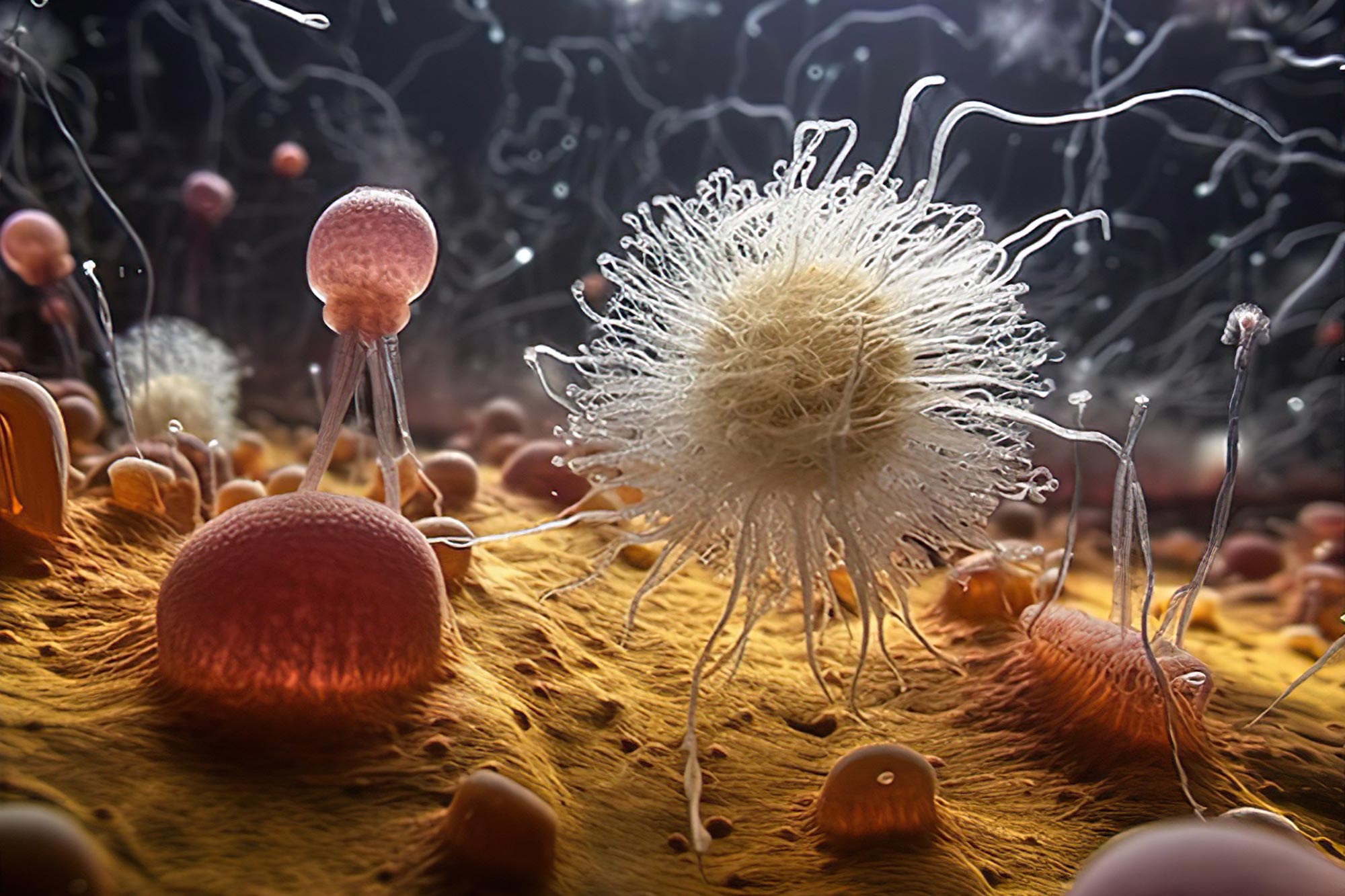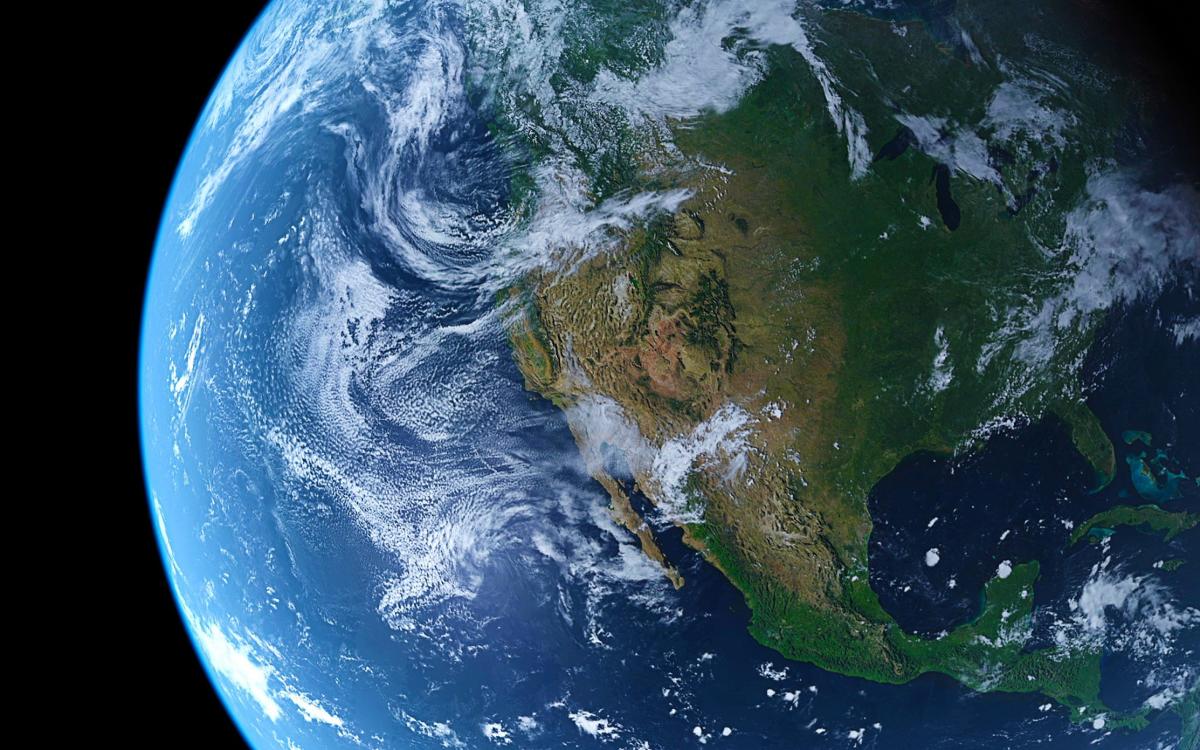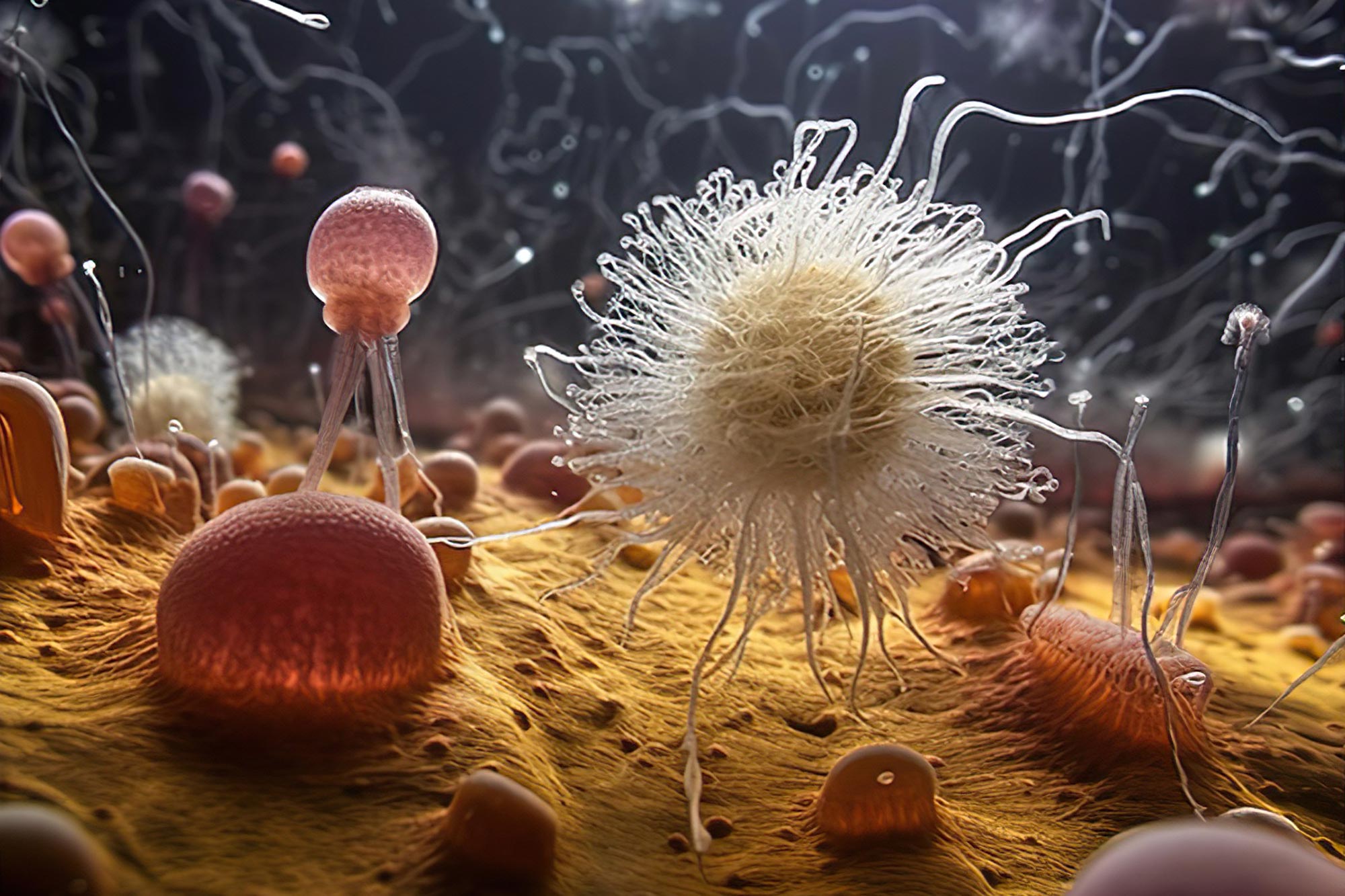von

Künstlerische Vorstellung einer Gruppe primitiver Eukaryoten aus der „Protosterol-Biota“, die auf einer Bakterienmatte auf dem Meeresboden leben. Basierend auf molekularen Fossilien lebten die Protosterol-Biota-Organismen vor etwa 1,6 bis 1,0 Milliarden Jahren in den Ozeanen und sind unsere ältesten bekannten Vorfahren. Bildnachweis: Organisiert auf MidJourney von TA 2023
Ein multinationales Forschungsteam hat in den Gesteinen uralte Protosteroide gefunden, was darauf hindeutet, dass komplexes Leben bereits vor 1,6 Milliarden Jahren existierte. Diese Moleküle liefern neue Einblicke in die Entwicklung komplexen Lebens und gleichen Diskrepanzen zwischen den traditionellen und Lipidfossilienbeständen aus.
Es stellt sich heraus, dass es im gesamten Mittelalter auf der Erde überraschend viele neu entdeckte Funde sogenannter Protosteroide gab. Ursprüngliche Moleküle wurden in einem frühen Stadium der Komplexität von Eukaryoten hergestellt – was die aktuelle Aufzeichnung fossiler Sterole über 800 und sogar 1.600 Millionen Jahre hinaus verlängert. Eukaryoten ist ein Begriff für das Reich des Lebens, das alle Tiere, Pflanzen und Algen umfasst. Sie unterscheiden sich von Bakterien durch eine komplexe Zellstruktur, die einen Zellkern umfasst, sowie durch einen komplexeren molekularen Mechanismus.
„Der Höhepunkt dieser Entdeckung ist nicht einfach eine Erweiterung der aktuellen molekularen Aufzeichnungen von Eukaryoten“, sagt Christian Hollmann, einer der Co-Wissenschaftler vom Deutschen GeoForschungsZentrum (GFZ) in Potsdam. „Angesichts der Tatsache, dass der letzte gemeinsame Vorfahre aller modernen Eukaryoten, einschließlich uns Menschen, wahrscheinlich in der Lage war, ‚reguläre‘ moderne Sterole zu produzieren, ist es wahrscheinlich, dass die Eukaryoten, die für diese seltenen Signaturen verantwortlich sind, zum Stamm des Stammbaums gehören.“

Benjamin Nettersheim, einer der Hauptautoren der Studie, untersucht hochauflösende Element- und Molekülkarten von 1,64 Milliarden Jahre alten Gesteinsproben, die im Geobiological Molecular Imaging Laboratory am MARUM analysiert wurden. Bildnachweis: MARUM – Zentrum für Marine Ökologie, Universität Bremen; in Descamps
Dieser „Stumpf“ stellt die gemeinsame Ahnenlinie dar, die der Vorläufer aller lebenden Zweige der Eukaryoten war. Ihre Vertreter sind schon lange ausgestorben, aber Details ihrer Natur könnten mehr Licht auf die Umstände werfen, unter denen sich komplexes Leben entwickelte. Obwohl weitere Untersuchungen erforderlich sind, um festzustellen, wie viel Prozent der Protosteroide möglicherweise aus seltenen Bakterien stammen, bringt die Entdeckung dieser neuen Moleküle nicht nur die geologischen Aufzeichnungen traditioneller Fossilien mit denen fossiler Fettmoleküle in Einklang, sondern ermöglicht auch einen seltenen und beispiellosen Einblick in die Welt . verloren aus dem alten Leben. Der konkurrierende Untergang der Stammgruppen-Eukaryoten, der durch das erste Auftreten moderner fossiler Stromale vor etwa 800 Millionen Jahren gekennzeichnet war, spiegelt möglicherweise eines der nachhaltigsten Ereignisse in der Entwicklung immer komplexer werdenden Lebens wider.
fügt Benjamin Nittersheim von Marom, Universität Bremen, hinzu, der die Studie gemeinsam mit Jochen Brooks verfasst hat[{“ attribute=““>Australian National University (ANU) – “due to potentially adverse health effects of elevated cholesterol levels in humans, cholesterol doesn’t have the best reputation from a medical perspective. However, these lipid molecules are integral parts of eukaryotic cell membranes where they aid in a variety of physiological functions. By searching for fossilized steroids in ancient rocks, we can trace the evolution of increasingly complex life.”

Dr. Nettersheim inserts a thin section and rock slices of 1.64 billion-years old rocks into the 7T solariX XR FT-ICR-MS equipped with a MALDI source at the Geobiomolecular Imaging Laboratory at MARUM. As part of ongoing research into mid-Proterozoic biomarker signatures at MARUM, GFZ and the Australian National University, Dr. Nettersheim aims to zoom into the cradle of eukaryotic life in unprecedented resolution. Credit: MARUM – Center for Marine Environmental Sciences, University of Bremen; V. Diekamp
Nobel laureate Konrad Bloch had already speculated about such a biomarker in an essay almost 30 years ago. Bloch suggested that short-lived intermediates in the modern biosynthesis of steroids may not always have been intermediates. He believed that lipid biosynthesis evolved in parallel with changing environmental conditions throughout Earth history. In contrast to Bloch, who did not believe that these ancient intermediates could ever be found, Nettersheim started searching for protosteroids in ancient rocks that were deposited at a time when those intermediates could actually have been the final product.
But how to find such molecules in ancient rocks? “We employed a combination of techniques to first convert various modern steroids to their fossilized equivalent; otherwise, we wouldn’t have even known what to look for,” says Jochen Brocks. Scientists had overlooked these molecules for decades because they do not conform to typical molecular search images. “Once we knew our target, we discovered that dozens of other rocks, taken from billion-year-old waterways across the world, were oozing with similar fossil molecules.”
The oldest samples with the biomarker are from the Barney Creek Formation in Australia and are 1.64 billion years old. The rock record of the next 800 million years only yields fossil molecules of primordial eukaryotes before molecular signatures of modern eukaryotes first appear in the Tonian period. According to Nettersheim “the Tonian Transformation emerges as one of the most profound ecological turning points in our planet´s history“. Hallmann adds that “both primordial stem groups and modern eukaryotic representatives such as red algae may have lived side by side for many hundreds of millions of years”. During this time, however, the Earth’s atmosphere became increasingly enriched with oxygen – a metabolic product of cyanobacteria and of the first eukaryotic algae – that would have been toxic to many other organisms. Later, global “Snowball Earth” glaciations occurred and the protosterol communities largely died out. The last common ancestor of all living eukaryotes may have lived 1.2 to 1.8 billion years ago. Its descendants were likely better able to survive heat and cold as well as UV radiation and displaced their primordial relatives.
“Earth was a microbial world for much of its history and left few traces,” Nettersheim concludes. Research at ANU, MARUM and GFZ continues to pursue tracing the roots of our existence – the discovery of protosterols now brings us one step closer to understanding how our earliest ancestors lived and evolved. Shooting at the ancient rocks with a laser coupled to an ultra-high resolution mass spectrometer in MARUM’s globally unique Geobiomolecular Imaging Laboratory, Dr. Nettersheim and his international collaborators aim at zooming into the cradle of eukaryotic life in unprecedented resolution to further improve our understanding of our early ancestors in the future.
Reference: “Lost world of complex life and the late rise of the eukaryotic crown” by Jochen J. Brocks, Benjamin J. Nettersheim, Pierre Adam, Philippe Schaeffer, Amber J. M. Jarrett, Nur Güneli, Tharika Liyanage, Lennart M. van Maldegem, Christian Hallmann and Janet M. Hope, 7 June 2023, Nature.
DOI: 10.1038/s41586-023-06170-w
Participating Institutions:
- Research School of Earth Sciences, The Australian National University, Canberra, Australia
- MARUM – Center for Marine Environmental Sciences, University of Bremen, Bremen, Germany
- Faculty of Geosciences, University of Bremen, Bremen, Germany
- Université de Strasbourg, CNRS, Institut de Chimie de Strasbourg, Strasbourg, France
- Northern Territory Geological Survey, Darwin, Australia
- German Research Center for Geosciences (GFZ), Potsdam, Germany
MARUM produces fundamental scientific knowledge about the role of the ocean and the ocean floor in the total Earth system. The dynamics of the ocean and the ocean floor significantly impact the entire Earth system through the interaction of geological, physical, biological and chemical processes. These influence both the climate and the global carbon cycle, and create unique biological systems. MARUM is committed to fundamental and unbiased research in the interests of society and the marine environment, and in accordance with the Sustainable Development Goals of the United Nations. It publishes its quality-assured scientific data and makes it publicly available. MARUM informs the public about new discoveries in the marine environment and provides practical knowledge through its dialogue with society. MARUM cooperates with commercial and industrial partners in accordance with its goal of protecting the marine environment.

„Entdecker. Entschuldigungsloser Unternehmer. Alkoholfanatiker. Zertifizierter Schriftsteller. Möchtegern-TV-Evangelist. Twitter-Fanatiker. Student. Webwissenschaftler.







More Stories
Die NASA macht in Bezug auf die Erde eine Entdeckung, die „so wichtig wie die Schwerkraft“ ist
Wie wurden Schwarze Löcher so groß und schnell? Die Antwort liegt im Dunkeln
Eine Studentin der University of North Carolina wird die jüngste Frau sein, die an Bord von Blue Origin die Grenzen des Weltraums überschreitet